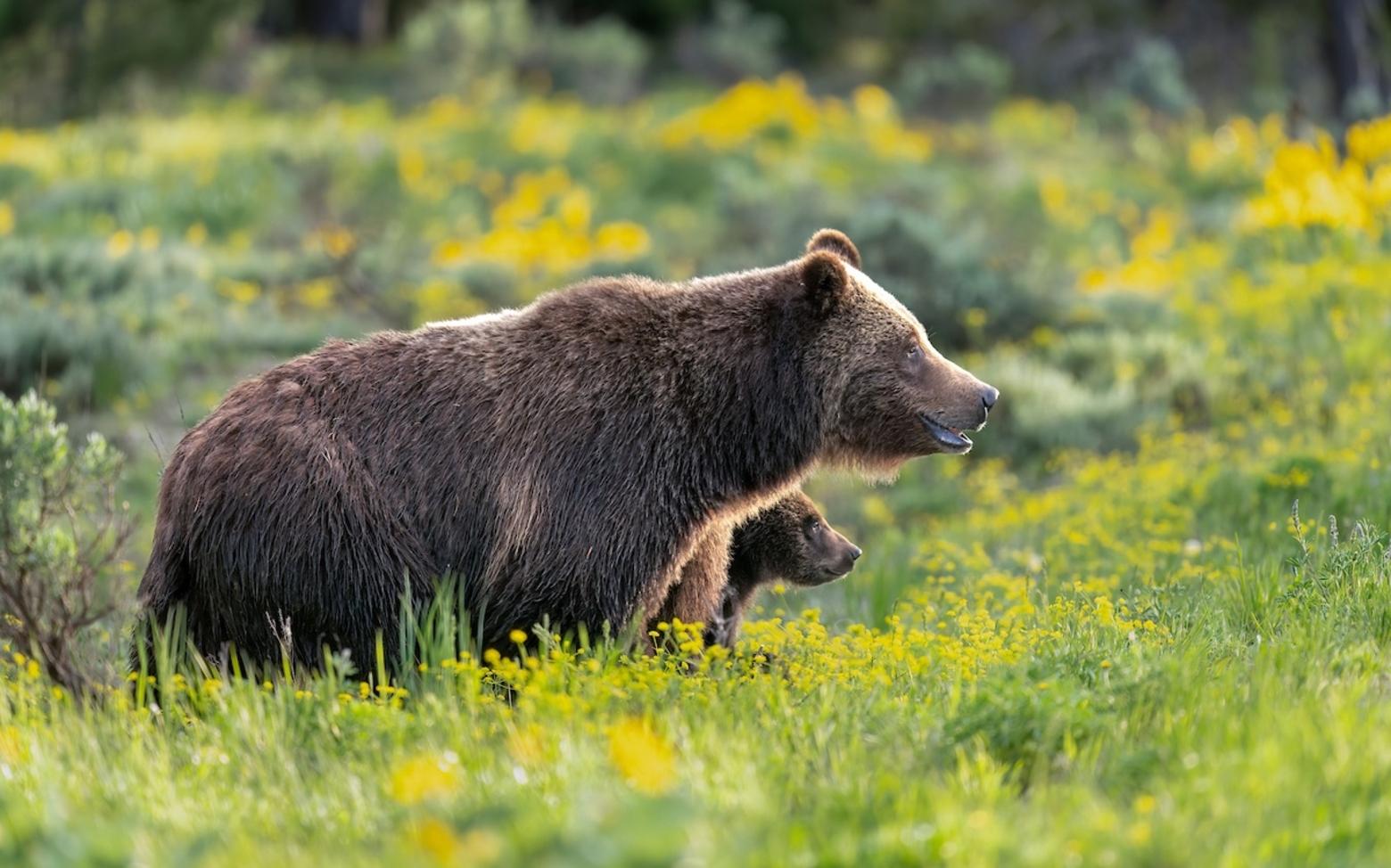Back to StoriesFuture of Grizzly Bear Study Group in Dire Straits
April 14, 2025
Future of Grizzly Bear Study Group in Dire StraitsAs Interior Secretary Doug Burgum touts successful dire wolf revival, IGBST fights for survival
by Robert Chaney
While Secretary of Interior Doug Burgum hailed the scientific revival of prehistoric dire wolves on April 9, his critics questioned the potential extinction of modern-day grizzly bear scientists.
At issue is the fate of the Interagency Grizzly Bear Study Team and its role overseeing the Endangered Species Act status of the Rocky Mountains’ keystone predator. The same week Burgum touted “de-extinction” as a way to restore valued creatures, the Center for Biological Diversity filed a Freedom of Information Act request for documents about the fate of the study team.
The activist organization sent its request to the U.S. Geological Survey, and included calls for communications from the U.S. Fish and Wildlife Service. Both agencies live in Burgum’s Interior Department. They’re part of the Interagency Grizzly Bear Committee, which networks a herd of federal and state policymakers with study team scientists to track the grizzly’s progress toward recovery and delisting from ESA protection.
The request seeks any records involving selling, leasing or closure of the USGS Northern Rocky Mountain Science Center in Bozeman as well as related offices in Glacier National Park and Missoula. It sought any documents about changes to the Interagency Grizzly Bear Study Team, including dismantling, cutting projects or halting activities.
“They’re supposed to respond in three weeks, but a lot of recent FOIAs we’ve sent they’re not responding to at all,” Center for Biological Diversity attorney Andrea Zaccardi said on Friday. “Based on the fact they’re not renewing the lease for the building that houses the USGS team, we want to know: Where will they work? Will they continue to work?”
On Friday, IGBC Executive Coordinator David Diamond said all 2025 scheduled meetings were going forward as normal, including the Bitterroot Subcommittee session on April 23 and the Yellowstone Ecosystem session on April 30. Highlights of those meetings include the science team’s annual grizzly bear population estimate reports showing how and where grizzlies are thriving, and the impact of poaching, conflict removals and other mortality threats.
“Based on the fact they’re not renewing the lease for the building that houses the USGS team, we want to know: Where will they work? Will they continue to work?” – Andrea Zaccardi, attorney, Center for Biological Diversity
However, employees across the federal government face mid-April deadlines to accept the second “Fork in the Road” resignation offer or risk getting fired through President Donald Trump’s Department of Government Efficiency cuts. Many others have already resigned or taken early retirements, including Interagency Grizzly Bear Study Team leader Frank van Manan.
“Without the study team there can be no recovery,” said Chris Servheen, former Fish and Wildlife Service grizzly recovery coordinator who now leads the Montana Wildlife Federation. “The states can’t do all the stuff the study team does. In the Yellowstone grizzly conservation strategy, the study team is cited in there 109 times.”
On January 15, FWS released an updated rule keeping grizzly bears in the Lower 48 states as a threatened species under Endangered Species Act protection. That decision, made at the end of President Joe Biden’s administration, rejected petitions by Montana, Wyoming and Idaho to delist grizzlies and turn them over to state management and potential hunting.
That rule was scheduled to have a series of public meetings, which the Trump administration canceled. However, a public comment period on the rule that was supposed to expire in March was extended to May 16. FWS officials did not respond to requests for explanation about why the period was extended or what other changes might be in store for the rule.
Both the agency and Congress have potential big ESA changes in the works. A bill offered by Rep. Bruce Westerman, R-Arkansas, would significantly change the law’s use of critical habitat, streamline new permits, retroactively modify old permits, and prevent some judicial review of actions affecting endangered species.
“If we’re going to be in anguish about losing a species, now we have an opportunity to bring them back. Pick your favorite species and call up Colossal [Biosciences].” – Doug Burgum, U.S. Interior Secretary
And FWS has a pending regulation change that would redefine the legal definition of “harm.” In the ESA, “harming” a protected species is a form of “take” - a broad term including killing, harassing, wounding and pursuing. No details have been released on the new definition proposal.
“Under Section 9, take is prohibited and harm is considered take,” Zaccardi said. “If they redefine that, it could limit situations where habitat modification would be considered take, so it wouldn’t be in violation of the act.”
Secretary Burgum in his public comments said using gene editing to save endangered species was better than government regulation.
“If we’re going to be in anguish about losing a species, now we have an opportunity to bring them back,” he said in a live-streamed Interior town hall meeting referencing the Dallas-based company that displayed three pups with dire wolf genetics on April 9. “Pick your favorite species and call up Colossal [Biosciences].”
For Servheen, Burgum’s dire wolf comments showed a lack of understanding of the ESA’s purpose.
“Sure, you can go to a genetic engineering company and produce an animal, but that has nothing to do with the ESA,” Servheen said. “You can’t just put them in a zoo and say they’re recovered. They need to have wild habitat to live in, and the act deals with habitat and mortality issues. It restricts exploitation of habitat so animals can live there.”
__________________________________________________________________________________________________
Mountain Journal is a nonprofit, public-interest journalism organization dedicated to covering the wildlife and wild lands of Greater Yellowstone. We take pride in our work, yet to keep bold, independent journalism free, we need the support of readers like you. Thank you.
Related Stories
January 27, 2025
Grizzly Bear ESA Status in Question as FWS Cancels Public Meetings
The U.S. Fish and Wildlife Service pulls out of all four meetings intended to explain its decision to retain grizzlies’ threatened...
December 7, 2023
After 20 Years of Lawsuits, Wolverine Listed as Threatened
Wolverines face numerous threats and only 300 exist in the Lower 48. Now that the U.S. Fish and Wildlife Service listed...
April 4, 2025
Public Opinion Boils Over as Feds Continue Slashing Jobs, Budgets
Demonstrators attended more than 1,000 “Hands Off” protests across the nation and Greater Yellowstone.





